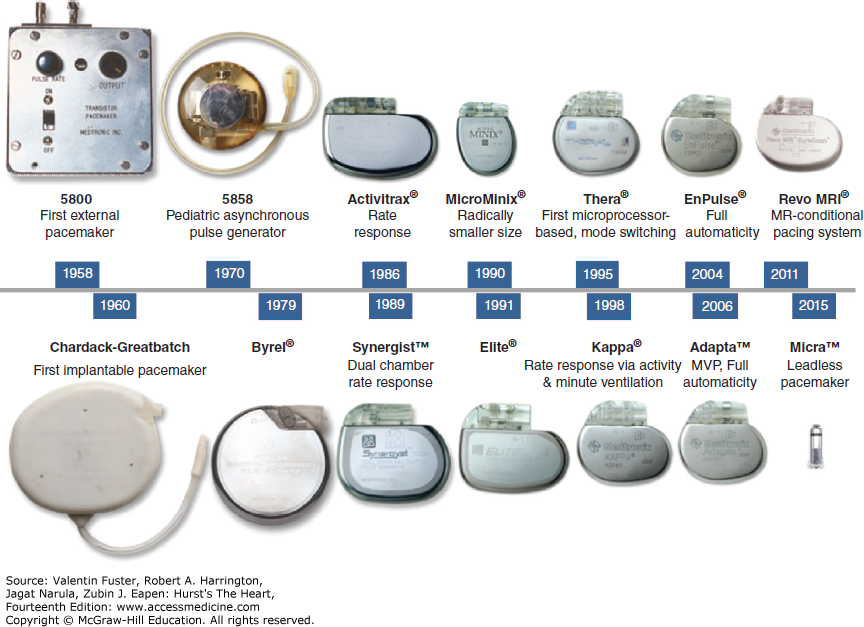
accessmedicine.mhmedical.com
History of the Pacemaker

accessmedicine.mhmedical.com
Not too long after WWII pioneers such as Earl Bakken and Paul Zoll successfully developed smaller more efficient pacemakers which were often worn as necklaces. In 1958 the first pacemaker to be inserted was given to Arne Larson in Sweden. This device only lasted for three hours. Larson received a second device that lasted two days. However, Larson would survive to live a long life, dying in 2001. Implanting electronic devices into human bodies presented many problems. Some components were too big until the invention of silicon transistors in 1956. The battery powering the pacemaker had an inconsistent life span until the invention of long-life lithium-ion batteries invented by Wilson Greatbatch. Clearly, there were many technological barriers that were broken during the development of the internal pacemaker.